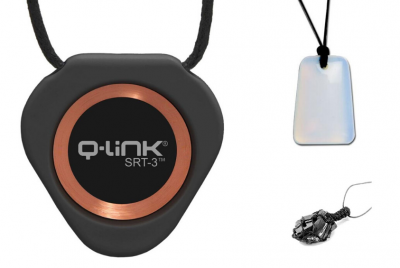When worn correctly, both Bluetooth and wired earbuds offer a lightweight and comfortable way to listen…
Here Are Four Simple DIY EMF Shielding Projects You Can Do At Home

*We may earn a commission for purchases made using our links. Please see our disclosure to learn more.
There are dozens upon dozens of EMF shielding products out there on the market. From smart meter covers to laptop pads, you can find just about whatever you need online. The drawback, however, is that these items can really test the limits of your budget — especially if you need protection in multiple areas. At times, it can feel like reducing EMF exposure is attainable only to those who are financially well-off.
In reality, however, this is not the case. EMF protection doesn’t have to come with a hefty price tag. All you need is a little creativity and some base materials, and you can make many different shielding items yourself. If saving money is on your radar — or you simply prefer to do things yourself — consider some of our DIY EMF shielding ideas below.
Basics of EMF shielding
Before you begin on your DIY projects, there are a few basic things to know. For instance, what types of materials shield against EMF radiation?
Essentially, when it comes to EMF radiation, your best bet is some type of conductive metal. Copper, nickel, and silver are some of the easiest to find. The metal’s electric charge disrupts the electromagnetic fields, preventing all or a portion of them from passing through. If you are using a protective fabric, make sure that it has some kind of conductive metal woven in.
Another thing to note is that, because of the metals, some of these items are not really meant for direct contact with skin. If you’re sensitive to nickel, for example, TitanRF Faraday Fabric may cause a rash.
In each of our projects below, we will recommend a material to use. But once you know the basics of EMF shielding, you can easily substitute our recommendations for whatever effective material you have on hand.
DIY EMF shielding ideas
Below are a few ideas for some protective items you can make yourself. This list is by no means exhaustive. If you need an item that isn’t listed here, your newfound knowledge of EMF shielding materials combined with a little creativity means the sky’s the limit.
1. Smart meter cover
Smart meters are notorious for their production of high amounts of RF-EMF radiation. We won’t go too much into that here, because we already covered it in-depth in Smart Meter Radiation: What You Should Know. And while there are plenty of covers out there, they can be a bit pricey. So how do you make your own?
For starters, you will want some kind of protective metal mesh that is pliable and easy to work with. An aluminum mesh window screen is one option you may already have lying around the house. Otherwise, something similar to Valchoose’s Stainless Steel Woven Wire Mesh should work fine. You will also need a pair of wire clips or kitchen shears in order to cut through the mesh, and some kind of metal-friendly glue (Gorilla Glue or something similar).
Once you have your materials, cut the mesh. You will need a few different pieces: a circular cover to go over the top of the meter, a long roll of mesh to wrap around the side, and a base to help affix the mesh to your wall. Attach the pieces using glue. When it comes to attaching the top circular part, you can reinforce the connection with thread if desired.
Installation of the cover must involve making sure there are no gaps between the cover and the wall around your smart meter. This is another time where glue can work wonders. Once installed, your cover acts as a Faraday cage, preventing the bulk of radiation from exiting while still allowing your meter’s signal to pass through.
2. Laptop pad
Laptops also produce a great deal of EMF radiation, and they are especially worrisome because many of us have a tendency to, well, place them on our laps. A protective pad allows you to continue using your laptop in this way if desired, although it is still best to place the device and its pad on a desk to allow a few inches of space between it and your body.
To make your own laptop pad, you need a shielding fabric and some kind of hard surface, as well as something to attach it all together. Mission Darkness’s TitanRF Faraday Fabric is great for this purpose. For the hard surface, you could use a cutting board large enough for your laptop and any peripherals. It doesn’t have to be fancy, either — something as basic as Thirteen Chefs’ Commercial Plastic Cutting Board is perfect. For connecting the pieces, a conductive thread such as The Pi Hut’s Stainless Thin Conductive Thread is ideal.
To make your laptop pad, wrap the cutting board in protective fabric. Use the thread to sew together the sides, so that the cutting board is fully enclosed inside of the fabric. Set your laptop on top and you’re ready to go.
3. WiFi router guard
A router guard is an essential item for any home with a WiFi signal. These devices act as a Faraday cage for your wireless router, helping eliminate the bulk of EMF radiation while still allowing the router’s signal through.
To build your own, you can undertake a process similar to the smart meter cover above. You’ll again need a conductive metal mesh such as an aluminum window screen, as well as something to hold the pieces together. TitanRF Faraday Tape works great in this instance, as your router guard really doesn’t have to withstand the elements like your smart meter cover.
Using tape and mesh, create a box large enough for your WiFi router to fit inside. Be sure to leave a small hole for the ethernet and power cords to pass through. This hole is enough to allow the WiFi signal through, as well — without it, your router may not work.
If desired, you can also create a router bag instead of a box. The process is similar, but instead, you would use a shielding fabric such as Amradield’s 100% Silver Fiber Fabric For Shielding Cages.
4. Bed canopy
If you can only reduce radiation in one part of your home, it should be your bed. This is because sleep allows your body to repair itself from damage done throughout the day, including any damage from EMF radiation. If you are exposed as you sleep, this restorative process is unable to take place.
To make your own bed canopy, you can use any protective fabric. Ideally, you will want something that light can penetrate through, unless you’re looking to make your bed a dark zone, as well. Blocsilver’s EMF Protective Fabric is perfect for this — it is actually a netting, making it an excellent candidate for a canopy that is both stylish and effective. Each roll is 10-feet by 4.72-feet, so depending on the size of your bed, you may need to sew or tape multiple sheets together. This can again be done with a conductive fabric or with TitanRF tape.
To create a canopy, measure out how much fabric you will need to cover your entire bed, from ceiling to floor. It is important that there is enough fabric that any gaps can be easily closed up. Attach the fabric to your ceiling at each corner of your bed using a nail or hook, and allow it to drape down. You can even sew small weights into the bottom of the netting in order to achieve a better hang. Try to leave an inch or two of extra fabric on the floor, to ensure a better seal.
Testing your DIY EMF shield
One protective item that is absolutely worth the investment is a quality EMF meter. An EMF meter can allow you to gauge the efficacy of your handmade item, which is always a good idea. There’s no sense using your protective cell phone case, for example, if it’s not actually offering you any protection.
When it comes to EMF meters, the TriField TF2 is sort of the gold standard of entry-level models. That is because not only is it easy-to-use, but it can measure all three forms of EMF radiation: electric fields, magnetic fields, and radiofrequency waves. The one drawback of the TF2 is that it’s a bit on the expensive side, however. If you’re looking for some more affordable options, see The Best EMF Meters For Any Budget.
Testing your item is a pretty straightforward process. First, take a measurement without the item installed to get an idea of how much EMF radiation is present, to begin with. Then, install your item and repeat the measurement process. If the item is effective, you will notice a marked decrease in EMF radiation after installation.
For example, let’s take your smart meter cover. To test its EMF shielding abilities, first measure the radiation around your smart meter without the cover. You may want to take measurements from both inside and outside of your home to get a fuller picture. Then, install the smart meter cover. Next, re-take your measurements from the same approximate distance and in the same locations that you did before.
For some items, it may be possible to perform a test without an EMF meter. Take your bed canopy, for example. If you want to see how effective that is at keeping radiation out, try fully surrounding your bed with your cell phone inside of the enclosure. If the canopy is effective, you should notice your phone’s signal drop off once the canopy is closed. Now, you wouldn’t want to stay inside the enclosed canopy with a phone for long, but this brief experiment can at least illustrate whether or not a signal can penetrate through.
Parting words
EMF protection doesn’t have to be expensive. Creating items yourself using protective fabrics and other materials can be a much more cost-effective way to lower the amount of EMF radiation present in your home.



